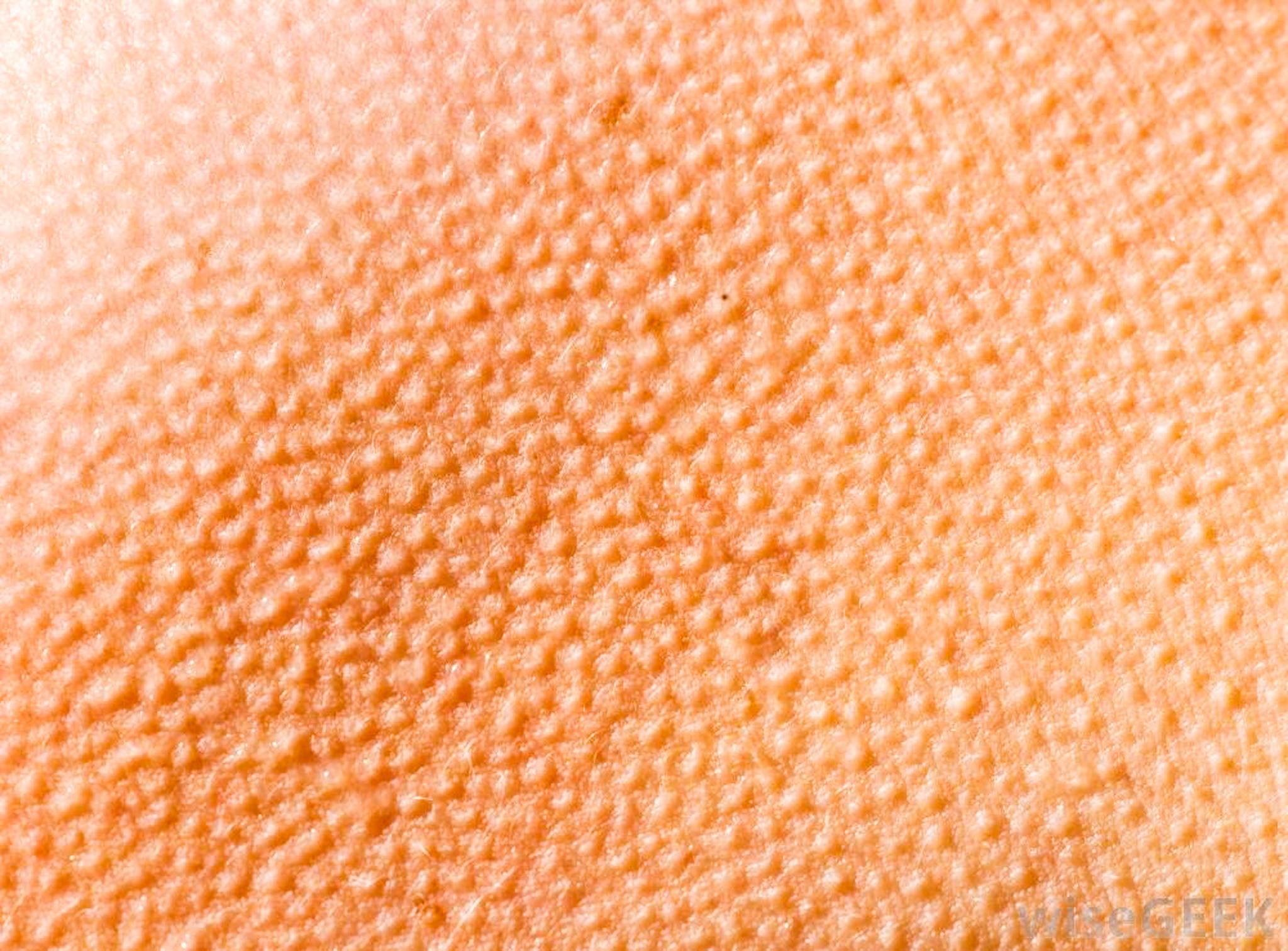
What is “goose-flesh”? How is it brought about?
Answer
486.6k+ views
Hint: The process of a temporary change in the skin as it gets protruded out in the form of tiny nodules due to tension in muscles.
Complete answer: Goose flesh is also known as goosebumps, and goose pimples. It is the formation of small bumps like a plucked goose on the skin of the body. This occurs due to the presence of muscular stress under unfavorable conditions. Generally, our body hairs are slanting, but due to some change in temperatures like extreme coldness or when the person is frightened, the hairs of our body stand erect. This leads to the skin becoming rougher.
This process may occur involuntarily because of the cations of the adrenaline hormones. They are also a type of vestigial response as they have lost their original function. It is observed that in ancient times, these hairs were the means of protection of animals and protect the animals from other predators.
They also trap more heat energy and have an insulating property. The reflex of producing the goose flesh is known as piloerection or the pilomotor reflex. It is usually found in humans, porcupines, or sea otters to protect themselves from other organisms.
When the tiny muscles present at the back of the hair called erector pili muscles contract and pull the hair to be erect then goose flesh is created. It is responsible for fight or flight reflexes and is started by the sympathetic nervous system. In animals, the goose flesh appears due to fear or anger, to intimidate other animals while in humans it occurs due to some irritating actions, fear, excitement, etc. It may also be caused due to drug withdrawal mainly opium.

Note: Sympathetic nervous system is one of the two major parts of the autonomic nervous system, while the other part is the parasympathetic nervous system. They are usually responsible for the body’s involuntary or unconscious actions and stimulate the fight or flight response. These responses occur at the time of the fight.
It was described first by Walter Bradford Cannon. The hormones which are responsible for this response may include estrogen, testosterone, and cortisol, as well as the neurotransmitters dopamine and serotonin which also affect how organisms react to stress.
Complete answer: Goose flesh is also known as goosebumps, and goose pimples. It is the formation of small bumps like a plucked goose on the skin of the body. This occurs due to the presence of muscular stress under unfavorable conditions. Generally, our body hairs are slanting, but due to some change in temperatures like extreme coldness or when the person is frightened, the hairs of our body stand erect. This leads to the skin becoming rougher.
This process may occur involuntarily because of the cations of the adrenaline hormones. They are also a type of vestigial response as they have lost their original function. It is observed that in ancient times, these hairs were the means of protection of animals and protect the animals from other predators.
They also trap more heat energy and have an insulating property. The reflex of producing the goose flesh is known as piloerection or the pilomotor reflex. It is usually found in humans, porcupines, or sea otters to protect themselves from other organisms.
When the tiny muscles present at the back of the hair called erector pili muscles contract and pull the hair to be erect then goose flesh is created. It is responsible for fight or flight reflexes and is started by the sympathetic nervous system. In animals, the goose flesh appears due to fear or anger, to intimidate other animals while in humans it occurs due to some irritating actions, fear, excitement, etc. It may also be caused due to drug withdrawal mainly opium.

Note: Sympathetic nervous system is one of the two major parts of the autonomic nervous system, while the other part is the parasympathetic nervous system. They are usually responsible for the body’s involuntary or unconscious actions and stimulate the fight or flight response. These responses occur at the time of the fight.
It was described first by Walter Bradford Cannon. The hormones which are responsible for this response may include estrogen, testosterone, and cortisol, as well as the neurotransmitters dopamine and serotonin which also affect how organisms react to stress.
Recently Updated Pages
What percentage of the area in India is covered by class 10 social science CBSE

The area of a 6m wide road outside a garden in all class 10 maths CBSE

What is the electric flux through a cube of side 1 class 10 physics CBSE

If one root of x2 x k 0 maybe the square of the other class 10 maths CBSE

The radius and height of a cylinder are in the ratio class 10 maths CBSE

An almirah is sold for 5400 Rs after allowing a discount class 10 maths CBSE

Trending doubts
The Equation xxx + 2 is Satisfied when x is Equal to Class 10 Maths

Why is there a time difference of about 5 hours between class 10 social science CBSE

Change the following sentences into negative and interrogative class 10 english CBSE

Write a letter to the principal requesting him to grant class 10 english CBSE

Explain the Treaty of Vienna of 1815 class 10 social science CBSE

Write an application to the principal requesting five class 10 english CBSE




